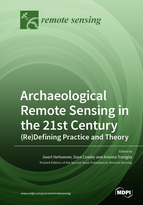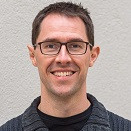Archaeological Remote Sensing in the 21st Century: (Re)Defining Practice and Theory
A special issue of Remote Sensing (ISSN 2072-4292). This special issue belongs to the section "Remote Sensing Image Processing".
Deadline for manuscript submissions: closed (31 December 2020) | Viewed by 55255
Special Issue Editors
Interests: terrestrial and airborne photography plus multi- and hyperspectral imaging; image-based 3D modelling; image fusion; scientific visualisations; digital archaeology; landscape archaeology
Special Issues, Collections and Topics in MDPI journals
Interests: aerial survey; landscape archaeology; survey methodology; iron age settlement and land use
Special Issue Information
Dear Colleagues,
Despite the many (r)evolutions in remote sensing technology over the past three decades, integration in archaeological practice and theory has sometimes been limited by frequent reliance on inherited tropes and practice without question. Rather than trying to review that situation with its origins in the 20th century, this volume seeks contributions that explore developing practice and theory in remote sensing archaeology for the 21st century.
Taking its scope as the use of remotely sensed data from either air- or spaceborne platforms for the benefit of archaeology and cultural heritage in general, authors are asked to submit papers that contribute to better defining the roles and contexts for why archaeologists may apply remote sensing techniques. In doing so, we hope that the collected papers will provide a focus on integrating remotely sensed data in archaeological practice (including a critical discussion on the role of remote sensing within such practice), addressing dislocations that may occur with theoretical concerns, and considering the future of this symbiosis.
All authors are expected to consider the following points to ensure the consistency of the papers in this Special Issue:
- Why can your applied or theoretical approach be considered state-of-the-art or novel?
- How does your applied or theoretical approach provide new archaeological information that cannot be achieved in any other way?
- How does your work fit in the wider context of archaeological remote sensing, and more generally in archaeological practice and theory? In addressing this point, authors should avoid to unravel the complete history of remote sensing, but rather focus on recent advances;
- How reproducible is your result? Can this approach also work in totally different settings (archaeological, environmental and theoretical) and is it easily adopted by others? If not, clarify why only very particular sensors/data/conditions/theoretical stances benefit from your approach;
- All, but the very theoretical papers, should include applied archaeological examples with interpretation, clearly showcasing the 'real world' benefits, especially to knowledge (about the past) creation and cultural resource management, that can be univocally traced back to the use of remote sensing approaches;
- Finally, authors are also invited to consider and discuss the use of additional data sources that can strengthen, improve or falsify their remote sensing-based interpretations.
Dr. Geert Verhoeven
Mr. Dave Cowley
Dr. Arianna Traviglia
Guest Editors
Manuscript Submission Information
Manuscripts should be submitted online at www.mdpi.com by registering and logging in to this website. Once you are registered, click here to go to the submission form. Manuscripts can be submitted until the deadline. All submissions that pass pre-check are peer-reviewed. Accepted papers will be published continuously in the journal (as soon as accepted) and will be listed together on the special issue website. Research articles, review articles as well as short communications are invited. For planned papers, a title and short abstract (about 100 words) can be sent to the Editorial Office for announcement on this website.
Submitted manuscripts should not have been published previously, nor be under consideration for publication elsewhere (except conference proceedings papers). All manuscripts are thoroughly refereed through a single-blind peer-review process. A guide for authors and other relevant information for submission of manuscripts is available on the Instructions for Authors page. Remote Sensing is an international peer-reviewed open access semimonthly journal published by MDPI.
Please visit the Instructions for Authors page before submitting a manuscript. The Article Processing Charge (APC) for publication in this open access journal is 2700 CHF (Swiss Francs). Submitted papers should be well formatted and use good English. Authors may use MDPI's English editing service prior to publication or during author revisions.
Keywords
- Airborne remote sensing
- Archaeology
- Archaeological theory
- Cultural resource management
- Data fusion
- Landscape archaeology
- Heritage documentation
- Machine learning
- Monochromatic, multi- and hyperspectral reflectance and thermal imaging
- Pattern recognition and object detection
- Photo interpretation
- Spaceborne remote sensing
- UAS/UAV







